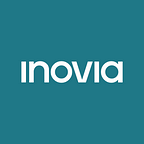The Art of Closing a (first) VC Deal
I am often asked by startups what it takes to close funding. Having just closed my first investment, I thought it would worthwhile to share my experience. The investment was in Crowdbase, an early stage Quebec City company. Crowdbase allows teams to easily share questions, answers, notes, and Web links in a private social network, and then intelligently structures that data into relevant topics and pages. www.crowdbase.com
For those that do not know me, I am the newest member of the Inovia team, having joined as an Entrepreneur in Residence and the Quebec Investment Director. I spent a number of years in startups and larger companies in telecom, software, ecommerce and payment processing. As CEO of two early stage companies I did my share of chasing VC money. http://inovia.vc/team
So what made the Crowdbase deal happen?
1. The entrepreneur and founding team were key — this is especially important in a seed-stage deal. We believe that if there isn’t a great entrepreneur driving the business, there is little chance it will make it to a great company. Even more importantly, a great entrepreneur must also have characteristics to one day become a great CEO. Great CEOs build great companies. Without that key person already in the Company, we would not have become “engaged” (engaged is the term used by VCs to devote time to look further at a deal). Albert Dang-Vu, the founder of Crowdbase, grew his last venture, Copernic, to over 30 million users. He followed that up by building Mirego from the ground up into a successful mobile app development company. Albert definitely has that “wow” factor that gets VCs excited.
2. Next we looked to see if there was a large addressable market, and gauged the potential for the Company to grow into a legitimate category leader. In the case of Crowdbase, we were satisfied with the results of our diligence in both areas. Social collaboration software will grow from $600M last year to $6B within 4 years.
3. Another question that was raised revolved around the existence of a sustainable business model. Some investors are fine with businesses that have yet to figure out their business model or whose sole exit strategy is to be acquired pre-revenue. We prefer to see a revenue model identified, and seek out early metrics to validate its existence. Giving away product to gain early adoption and feedback is OK, but at some point, the following questions need to be answered: will someone pay for it and how much will they pay? As soon as their beta is over, Crowdbase is planning on rolling out an appealing recurring revenue model, one that has already been validated by indirect competitors currently in the market.
4. Post-financing, the Company and Investor(s) form a team that will likely work together for years to come. For this reason, every Company we are seriously interested in presents to the entire iNovia team during our weekly Partner meetings. In this example, we had already known the founder of Crowdbase for some time, and had seen the Company evolve in a very positive way. After the presentation, we all felt comfortable working towards doing a deal.
5. The fact that Crowdbase’s team made significant progress by bootstrapping the business and made things happen with limited resources demonstrated a lot. Crowdbase could have continued to self-fund the business or pursued other funding alternatives, but instead chose to approach Inovia and Real Ventures for their value add.
6. After qualifying the opportunity and discussing the deal internally, we issued a term sheet with the co-investors. For those unaware, a term sheet details the amount being invested, price per share, share terms and various conditions of the investment. The term sheet was promptly signed. I think the smoothness of this step is a good indication of a positive relationship going forward.
7. Once we agree on all the terms, we prepare an Investment Committee Memo (ICM). This document (roughly 10–20 pages) outlines why we think this is a good investment, and provides details on the team, product, addressable market size, competition, business model, revenue forecasts and possible exit valuations. The ICM is then presented to our independent Investment Committee for their final feedback.
8. Lawyers love closing documents and final due diligence, but most entrepreneurs hate it. There is always lots of back and forth, fine print and documents to get signed. In this case, due diligence was very straight forward, thanks in part to the fact that we had a great law firm (Osler). Crowdbase also had all their documents well organized and thus was able to respond quickly to requests.
9. You would think there should be some sort of celebration when final documents get signed and the money transfer occurs, but the reality is that we are all too busy getting back to business. Funding is essential for the growth of any business but it can also be very time consuming and even distracting to the core business.
I am lucky to get to meet so many passionate entrepreneurs with innovative ideas. There are so many good businesses out there and we would love to fund them all, but the reality is that we need to focus on those that are most likely to build huge successful companies. That is the most challenging part of being a VC.
